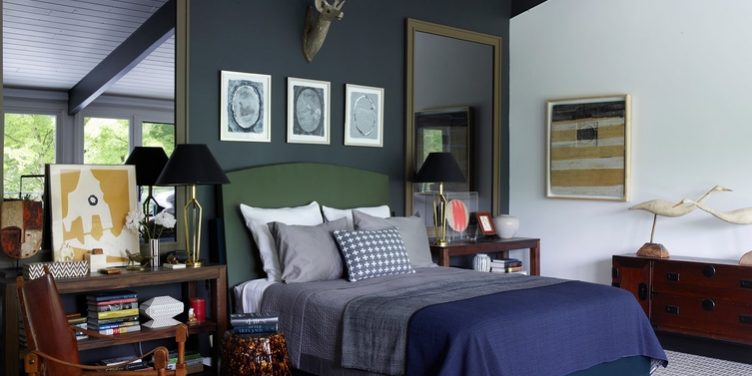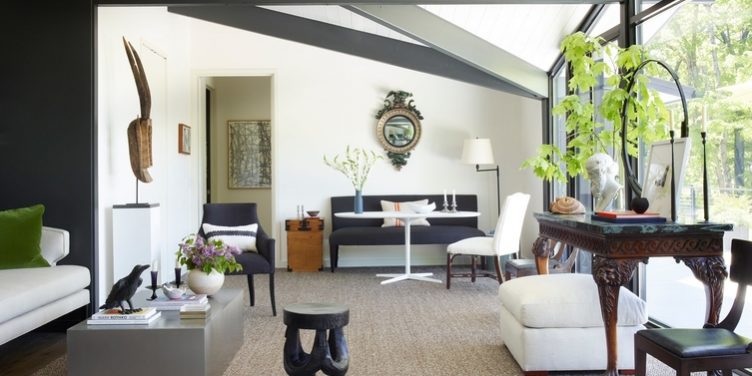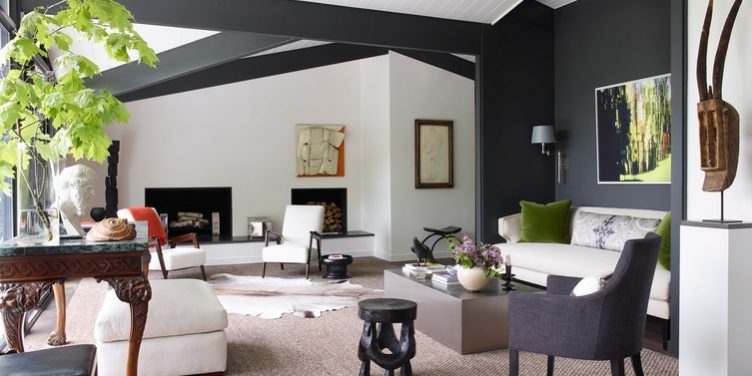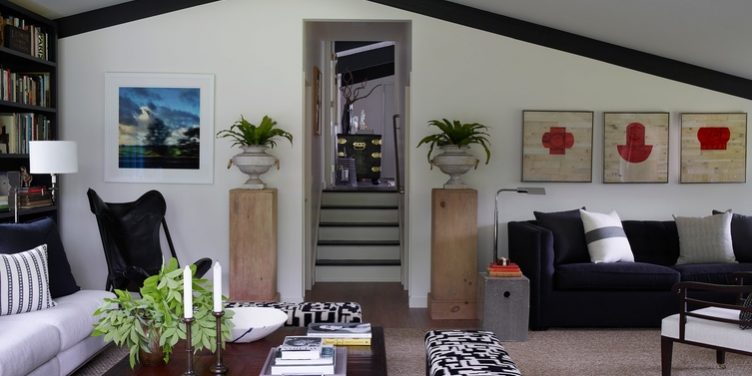INSPIRATION
A COOL, COUNTRY STYLE HOME
Interior designer Matthew Patrick Smyth breathes new life into his own 1970s prefab
One might find it rather curious that a classically minded interior designer like Matthew Patrick Smyth would leave his beloved 18th-century weekend retreat in Sharon, Connecticut, for a neglected 1970s prefab in the woods. But when he was notified of a price reduction on the listing he had been tracking in nearby Salisbury (Smyth is a self-proclaimed real estate junkie), he didn’t think twice. “I immediately went to see the property and ended up buying it that same day,” says the Manhattan-based Smyth, who also keeps an apartment in Paris. “My friends thought I was crazy, but I needed a change and I wanted the challenge of tackling a ranch house like this.” The 2,200-square-foot residence, originally constructed for a Pan Am pilot by the custom prefab company Deck House (now Acorn Deck House Company), fell into disrepair after having been rented out for years. “The home was a mess, with layers of linoleum, avocado green appliances, a hot tub, a steam room, and a dated stone fireplace,” recalls Smyth, “although I’m sure it was quite the jazzy bachelor pad when it was first built. It still had a good energy about it that I felt right away.”
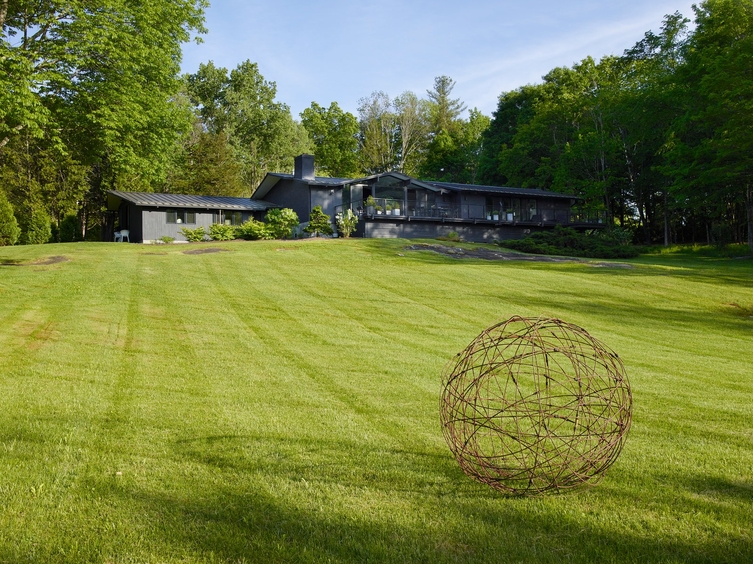
In choosing the furnishings, the designer flexed his editing muscles more than he’s used to. “I could pile on the antiques in the Sharon house, but I had to be more careful here,” says Smyth. “Decor needs to be appropriate for its environment and architecture, but I also couldn’t abandon my love of antiques just because I moved to a midcentury-modern house. I didn’t want it to feel stereotypical of that era, either.” With that in mind, he decided on a mix of his most prized antique and vintage finds alongside custom upholstery, focusing his eye on pieces that were overall “visually lighter than the ones I had been living with in my previous home.”
He started by choosing three key items: A South African captain’s trunk that welcomes guests in the entry, and a circa-1850 Irish console and a gilded Regency mirror, both of which grace the living area. “After that, everything else fell into place,” explains Smyth. “It’s simple, light, and comfortable, yet it’s still elegant. And there’s nothing too precious, enabling guests to feel completely relaxed.” The art lining the walls consists mostly of works by friends that Smyth holds near and dear. “Acting as your own client can be difficult because the choices are endless,” he says. “But this house sums up exactly how I want to design at this stage of my career. It’s a true reflection of who I am right now.”

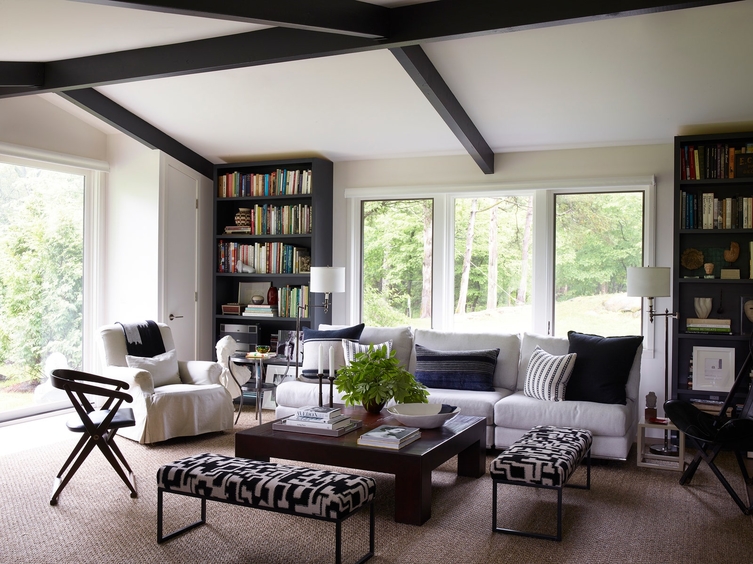
The kitchen of interior designer Matthew Patrick Smyth’s Salisbury, Connecticut, weekend house features Cambria quartz countertops, a backsplash of Selvaggio Mosaics from Ann Sacks, and circa-1970 barstools by Börge Lindau and Bo Lindekrantz for Lammhults. “The house was a mess before,” says Smyth, “with layers of linoleum and avocado green appliances. Everything had to go.”
The main living space features multiple seating areas, including one for dining. The convex Regency mirror on the far wall and the 19th-century Irish console against the window are among the first pieces that Smyth selected for the house. “Acting as my own client is difficult because I see a room five different ways and I have to choose just one,” says Smyth. “In some ways, it’s similar to designing a show house.”
Smyth traded in the living area’s original stone fireplace for a sleek and simple version. “It was very dated,” he says of the previous incarnation. An African mask from Sutter Antiques and a vintage Indian stool from Comerford Collection lend interest to the streamlined seating. The abstract photo above the sofa is by Smyth.
Smyth’s office, which doubles as a guest room, features a seating area that includes his favorite vintage English armchair, a 1970s sofa upholstered in a Schumacher fabric, and benches from Comerford Collection covered in a C&C Milano fabric.


